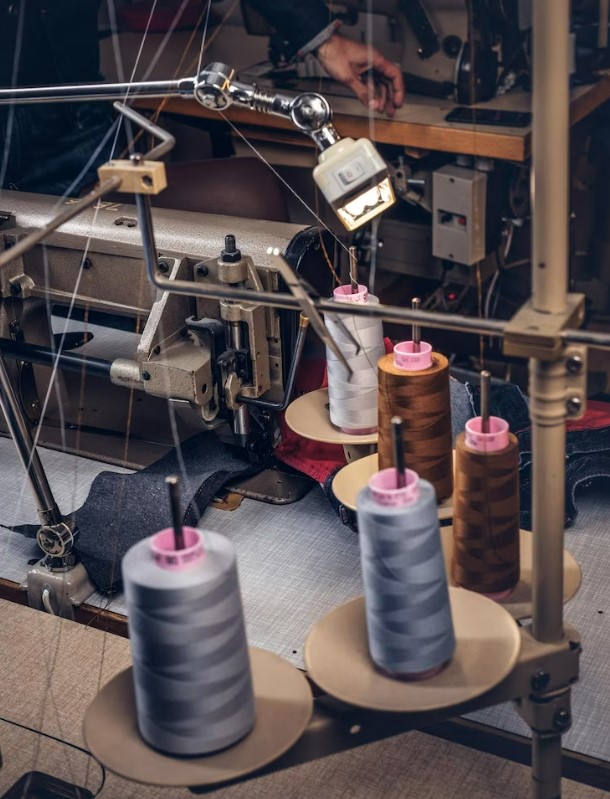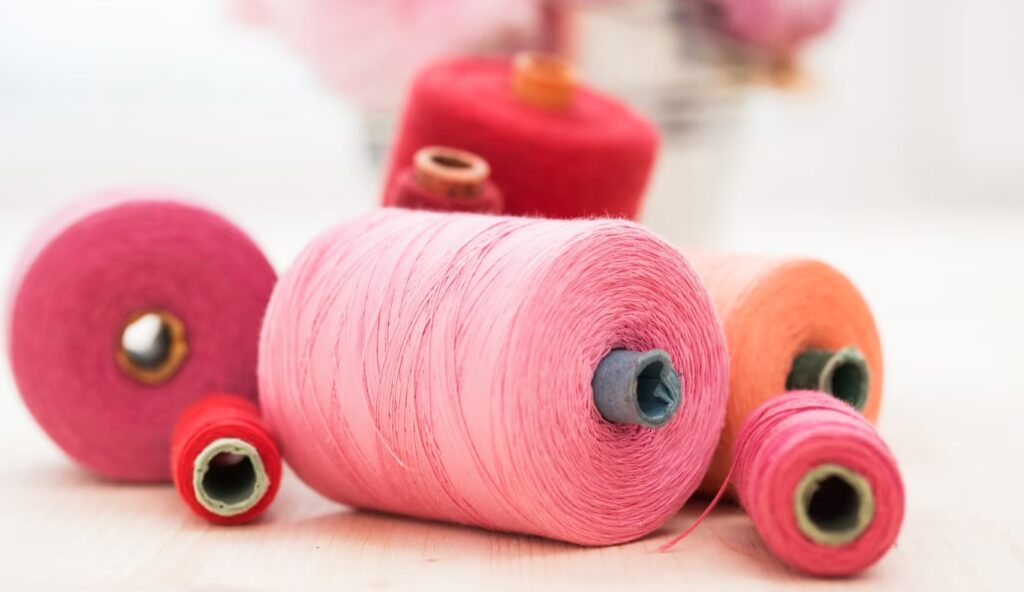
SEW WITH CONFIDENCE
Everything You Need to Know About Sewing Threads
Hey there! Let’s talk about something that’s often overlooked but super important in the art of manufacturing lingerie: sewing threads. Whether you’re just starting out in the intimate apparel industry or you’ve been in the business for a while, it’s fundamental to understand just how significant sewing threads are. In this blog post, we’ll talk about sewing threads, exploring different types, sizes, and how they can impact the overall look and performance of your created intimate apparel. We’ll also talk about sewability and the qualities you should look for in high-quality threads. So, let’s get started and unravel the secrets together!

I. UNDERSTANDING SEWING THREADS
A. What is a Sewing Thread?
Sewing threads are intricately crafted fibres, engineered to effortlessly glide through sewing machines, forming seamless stitches that are both durable and visually appealing. These threads are meticulously designed to ensure optimal performance ensuring that stitches remain intact and undistorted, while adding an aesthetic touch to the overall appearance of the seams.
B. Factors Affecting Aesthetics
When choosing a thread for decorative purposes like topstitching or embroidery, factors such as colour, lustre, and fineness/thickness come into play. Achieving the desired aesthetics involves ensuring the right hue and shade match, considering colour durability, choosing appropriate stitch styles, and ensuring consistent and uniform stitch formation.
C. Factors Affecting Performance
Threads used in garments must withstand the rigors of sewing, finishing, stretching, and recovery during wear. Evaluating the performance of threads encompasses analyzing crucial factors like the strength of seams, resistance to abrasion, elasticity, ability to withstand chemicals and flames, as well as color retention under various conditions.

II. UNDERSTANDING SEWABILITY
A. What is “Sewability”?
Sewability refers to a sewing thread’s performance during the sewing process. A thread with good sewability possesses a uniform diameter and a smooth surface finish. These characteristics contribute to uniform strength, reduced friction, minimal breakages, and the production of high-quality garments.
B. Sewability Parameters
To gauge the sewability of a thread, several parameters come into play, including:
- No breakages in high-speed sewing
- Consistent stitch formation
- Absence of skipped stitches
- Evenness to prevent tension changes during sewing
- High abrasion resistance
- Sufficient surface smoothness to ensure easy passage through machine guides
III. TYPES OF SEWING THREADS
A. Natural Threads
While the usage of threads made from natural substrates is minimal in industry applications, cotton thread remains the most commonly used natural thread in the intimate apparel industry.
B. Synthetic Threads
Due to the limitations of natural fibers, synthetic threads have gained popularity. Threads made from synthetic fibers possess desirable properties such as high tenacity, excellent resistance to abrasion and chemicals, and immunity to moisture, rot, mildew, insects, and bacteria.

IV. UNDERSTANDING THREAD CONSTRUCTION
A. Basics of Thread Construction
Every traditional sewing thread originates from basic yarns formed by intertwining shorter fibres or continuous filaments of superior quality. This initial construction stage lays the foundation for thread quality and performance.
B. Thread Terminology
To understand the differences between various thread types, it’s essential to familiarize yourself with relevant terminology:
- Tensile Strength: The tension at which a thread breaks, measured in grams or kilograms.
- Tenacity: The strength-to-thickness ratio is determined by dividing the tensile strength of the thread by its thickness.
- Loop Strength: Loop strength refers to the amount of force or load needed to break a length of thread that has been looped through another length of the same thread.
- Elongation at Break: Elongation at break is the degree of stretching or extension that a thread experiences at the point of breaking, presented as a percentage of its initial length.
- Modulus: A numerical value indicating the behavior of the thread when subjected to tensile force.
- Elasticity: The property enabling a thread to recover its original length immediately after tension is released.
- Shrinkage: The contraction of a thread under the action of washing or heating.
- Moisture Regain: Moisture regain refers to the percentage of moisture weight present in a fiber or thread compared to its weight when completely dry. It indicates the capacity of the material to absorb and retain moisture.

V. REQUIREMENTS OF GOOD QUALITY SEWING THREADS
To ensure good quality sewing threads, focus on the following key requirements:
- Strong tensile strength
- Smooth surface and no faults
- Uniform thickness/diameter
- Excellent elasticity
- Superior colour fastness
- High abrasion resistance
In a nutshell, sewing threads have a significant impact on the quality and durability of garments that should not be overlooked. By carefully selecting the right thread, considering factors such as type, size, aesthetics, performance, sewability, and quality requirements, you can elevate your creations to new heights. So, give sewing threads the attention they deserve and witness the difference they can make in your intimate apparel business.
